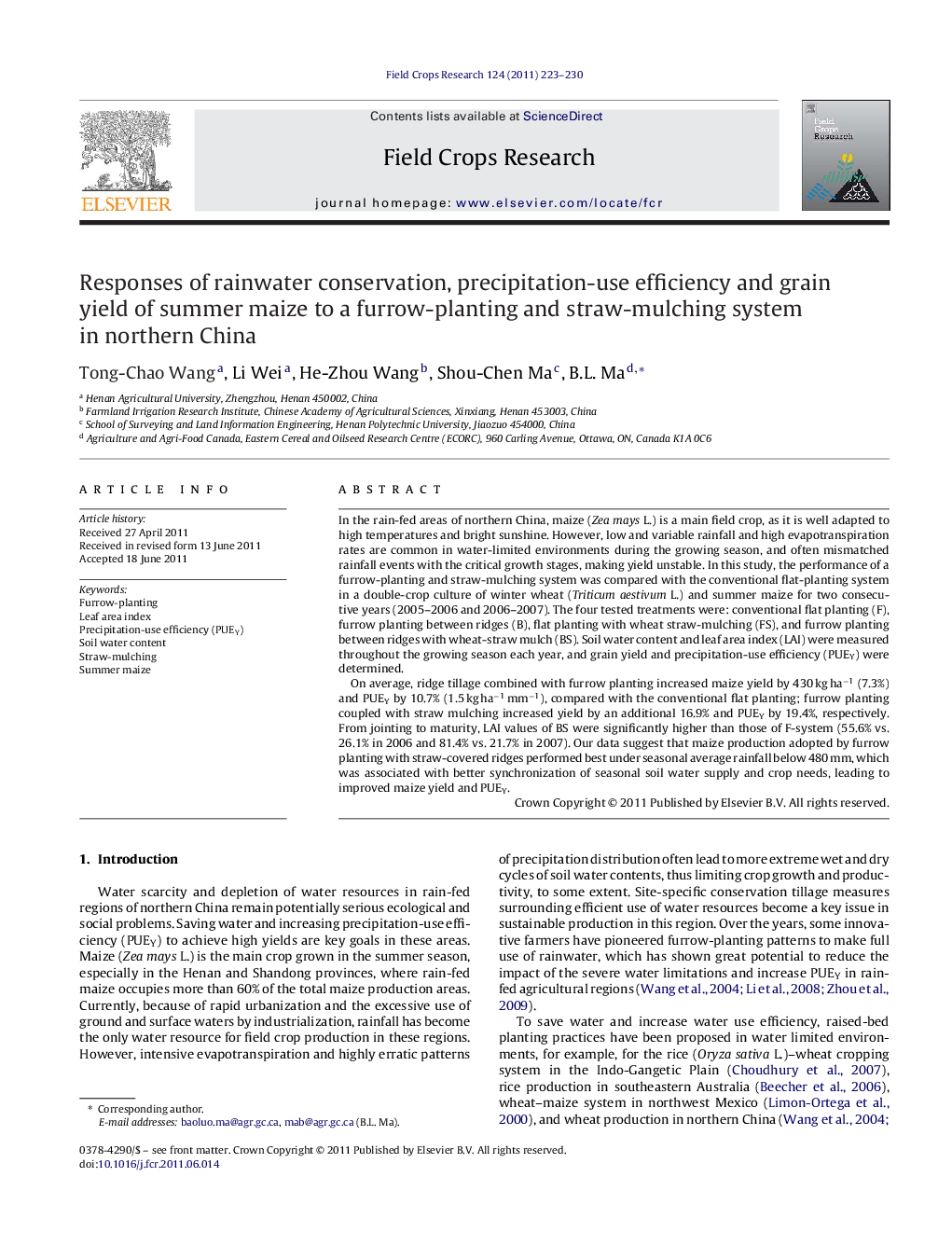| کد مقاله | کد نشریه | سال انتشار | مقاله انگلیسی | نسخه تمام متن |
|---|---|---|---|---|
| 4510683 | 1321869 | 2011 | 8 صفحه PDF | دانلود رایگان |

In the rain-fed areas of northern China, maize (Zea mays L.) is a main field crop, as it is well adapted to high temperatures and bright sunshine. However, low and variable rainfall and high evapotranspiration rates are common in water-limited environments during the growing season, and often mismatched rainfall events with the critical growth stages, making yield unstable. In this study, the performance of a furrow-planting and straw-mulching system was compared with the conventional flat-planting system in a double-crop culture of winter wheat (Triticum aestivum L.) and summer maize for two consecutive years (2005–2006 and 2006–2007). The four tested treatments were: conventional flat planting (F), furrow planting between ridges (B), flat planting with wheat straw-mulching (FS), and furrow planting between ridges with wheat-straw mulch (BS). Soil water content and leaf area index (LAI) were measured throughout the growing season each year, and grain yield and precipitation-use efficiency (PUEY) were determined.On average, ridge tillage combined with furrow planting increased maize yield by 430 kg ha−1 (7.3%) and PUEY by 10.7% (1.5 kg ha−1 mm−1), compared with the conventional flat planting; furrow planting coupled with straw mulching increased yield by an additional 16.9% and PUEY by 19.4%, respectively. From jointing to maturity, LAI values of BS were significantly higher than those of F-system (55.6% vs. 26.1% in 2006 and 81.4% vs. 21.7% in 2007). Our data suggest that maize production adopted by furrow planting with straw-covered ridges performed best under seasonal average rainfall below 480 mm, which was associated with better synchronization of seasonal soil water supply and crop needs, leading to improved maize yield and PUEY.
• We compared a furrow-planting and straw-mulching system with the flat-planting.
• The new system reduced rainfall water loss and soil surface evaporation.
• Maize water use was better matched with soil water availability.
• This system led to extended duration of green leaf area, greater yield and PUEY.
• Effective for rain-fed maize in regions with ≤480 mm growing season rainfall.
Journal: Field Crops Research - Volume 124, Issue 2, 14 November 2011, Pages 223–230